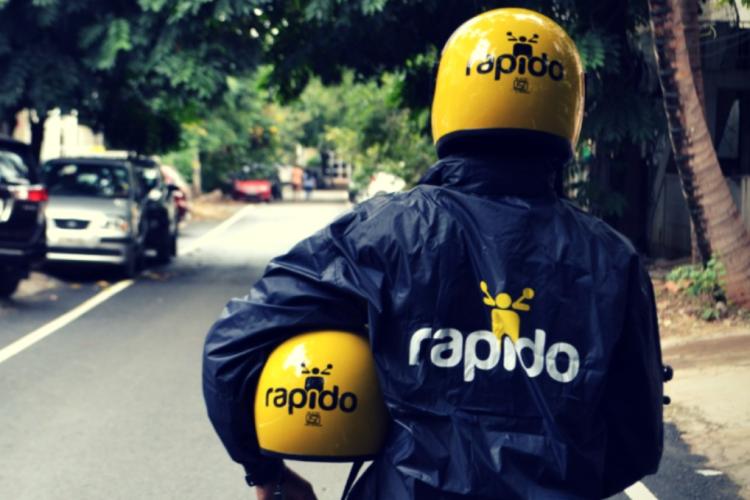
Rapido’s subscription model: India’s ride-hailing industry is expanding at a brisk pace. Revenue touched $7.6 billion in 2024, according to Statista, and is projected to nearly double by 2030, crossing $14 billion. The growth reflects rising urban mobility needs and the demand for affordable, flexible, technology-enabled transport.
For over a decade, the market was dominated by two giants, Uber and Ola. Uber accounts for 79% of ride-hailing users, while Ola follows with 75%. Their scale towers over smaller rivals such as EasyCabs, Quick Ride, and BlaBlaCar. Both leaders relied on a commission-based model, taking a share of each fare booked through their platforms. While this provided steady revenue, it left drivers dissatisfied. Earnings were whittled down by commissions and uncertain incentives, leading to high churn and little loyalty.
READ | Arming of citizens undermines Assam’s security goals
Into this space entered Rapido, a Bengaluru-based start-up founded in 2015. Unlike Ola and Uber, which focused on cars and buses, Rapido made a contrarian bet on India’s most common vehicle: the motorcycle. That bet has proved prescient. The company now operates in more than 250 cities, facilitates over 4.3 million rides daily, and has reached profitability—an achievement its bigger rivals still struggle to claim.
Subscription vs commission
The key to Rapido’s success lies in how it restructured the relationship between platform and driver. Instead of charging a commission on every fare, Rapido imposes a flat subscription fee. Drivers pay as little as ₹9 per day, after which they keep every rupee they earn.
This reversal of the conventional model has significant consequences. For drivers, the ability to keep the full fare translates into higher take-home pay, which in turn reduces attrition and builds loyalty. For the platform, the subscription model generates a predictable revenue stream regardless of fluctuations in daily demand. And because drivers are more satisfied, Rapido spends less on constantly recruiting and training replacements. The supply chain becomes stickier, more stable, and more cost-efficient.
Extending the playbook to food delivery
Having proved its model in mobility, Rapido is now turning its attention to food delivery, a market valued at over $12 billion. The space is dominated by Swiggy and Zomato, both of which charge restaurants hefty commissions of 16 to 30 percent on each order. Rapido is betting on a leaner model, with commissions capped between 8 and 15 percent depending on order value.
The company is also introducing flat delivery fees for customers—₹25 for orders below ₹400 and ₹50 for larger ones. This is a sharp contrast to the dynamic pricing often seen on incumbent platforms. For small restaurants, many of which have long complained about the burden of high commissions and advertising spends, Rapido’s entry could offer much-needed relief. By leveraging its existing two-wheeler fleet, the company also enjoys a natural cost advantage in short-distance, hyperlocal deliveries.
Why subscription works
The subscription model works because it aligns incentives across the value chain. For drivers and delivery partners, it provides certainty and allows them to retain a greater share of their income. For restaurants, the reduction in commission costs strengthens margins and lowers the barriers to entry, enabling smaller players to compete on more equitable terms. For customers, flat delivery fees offer clarity and predictability, sparing them the sudden shocks of surge or dynamic pricing.
What Rapido has demonstrated is that platform design matters as much as market scale. By shifting from a percentage-based levy to a flat fee, it has created a more balanced ecosystem where each participant—driver, restaurant, and customer—has a tangible reason to stay engaged.
The challenges ahead
Yet success in food delivery will be harder won than in ride-hailing. The sector has seen multiple failures in recent years, with Uber Eats, Amazon Food, and Ola’s Foodpanda all exiting after brief stints. Competition is cut-throat, discounts are costly, and customer loyalty is fickle. Rapido’s challenge will be to maintain service reliability while scaling rapidly toward its stated goal of operating in 500 cities by 2025. Execution, not strategy, will determine whether it can hold its ground against entrenched incumbents.
If Rapido succeeds, the implications could be far-reaching. Much like Reliance Jio reshaped Indian telecom with its aggressive pricing and disruptive entry, Rapido’s subscription model could redefine the economics of platform businesses in India. It signals a structural shift away from extractive commissions toward models that spread benefits more evenly across the ecosystem.
In markets where affordability and inclusivity matter more than scale alone, the company may have uncovered a formula for sustainability. By aligning the interests of all stakeholders, it offers a blueprint for how India’s digital platforms can evolve beyond short-term profitability battles into longer-term, mutually reinforcing growth. The question now is whether Rapido can sustain its momentum and turn disruption into durability.
Dr Alok Raj is Associate Professor, and Dr Kanagaraj Ayyalusamy Professor at XLRI Jamshedpur.
